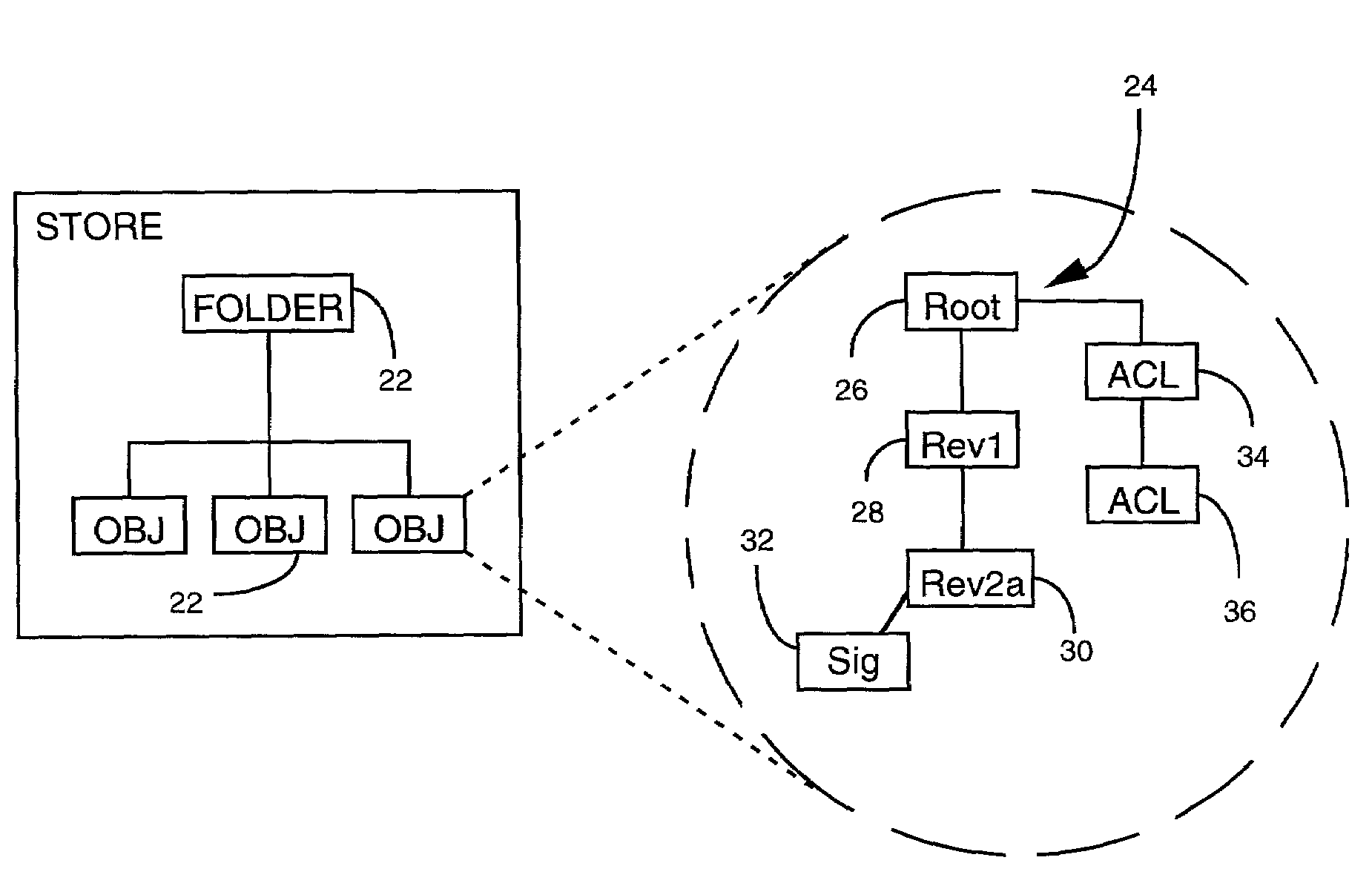Data replication based upon a non-destructive data model
- Summary
- Abstract
- Description
- Claims
- Application Information
AI Technical Summary
Benefits of technology
Problems solved by technology
Method used
Image
Examples
Embodiment Construction
[0028]The present invention is applicable to all types of information dissemination systems which employ replication of data objects at multiple locations. A data object can include a task, a document, a saved search, a list of contacts, a file, a discussion entry, a field entry, or a container of other objects such as a folder, among others. To facilitate an understanding of the concepts which underlie the present invention, examples of the invention are described hereinafter with reference to a document that undergoes modification in a group collaboration. It will be appreciated, however, that these descriptions are merely exemplary, and should not be construed to limit the practical applications of the invention in any manner.
Overview
[0029]One example of an environment in which the replication system of the present invention can be employed is illustrated in the block diagram of FIG. 1. Information to be shared among multiple locations is associated with a store 10. In general, a...
PUM
 Login to View More
Login to View More Abstract
Description
Claims
Application Information
 Login to View More
Login to View More - R&D
- Intellectual Property
- Life Sciences
- Materials
- Tech Scout
- Unparalleled Data Quality
- Higher Quality Content
- 60% Fewer Hallucinations
Browse by: Latest US Patents, China's latest patents, Technical Efficacy Thesaurus, Application Domain, Technology Topic, Popular Technical Reports.
© 2025 PatSnap. All rights reserved.Legal|Privacy policy|Modern Slavery Act Transparency Statement|Sitemap|About US| Contact US: help@patsnap.com



